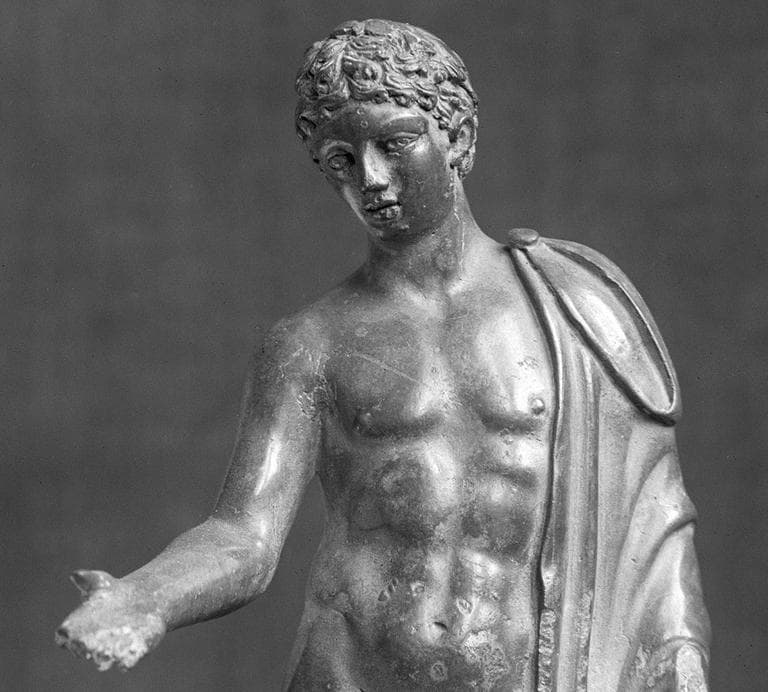Advertisement
A Roman Statue, Stolen A Century Ago, Is Found At MFA, And Returned

In the summer of 1901, a Mr. Richard was apprehended for stealing art in France. Authorities found in his possession a number of pieces taken a month earlier, on July 3, from (what is now known as) the Musée de la Chartreuse in Douai.
But they didn’t find the museum’s small ancient Roman bronze of a nude, young man dubbed "Antinoüs," despite Mr. Richard including the 6-inch figure on “a list of the objects he had removed,” according to the institution.
And so it stood, until last spring when Boston’s Museum of Fine Arts received “a routine request” from a Belgian museum to borrow its Roman statuette of "Mercury" dating to the first or second century A.D.
“We do our best to review the provenance of all outgoing loans, particularly those going overseas,” says Victoria Reed, the MFA’s curator of provenance, the person at the museum in charge of researching the ownership history of its collection and works it’s considering acquiring.
Records indicated that the MFA had purchased its "Mercury" from the major Boston collector Edward Perry Warren in 1904. Ultimately more than 3,000 works from his collection, primarily antiquities, would go to the museum via purchases and donations. Warren had loaned the "Mercury" to a London “Exhibition of Ancient Greek Art” in 1903, but, the MFA reports, “It is not known where or from whom Warren had acquired it.”
Some scholarly articles had noted "Mercury’s" resemblance to the stolen Douai sculpture, Reed says. So MFA staff wrote to the French museum about the piece last June.
“The museum in Douai had 19th-century photographs of the object that made it pretty clear that it was the same object,” Reed says. In particular, the images showed “similar areas of damage … fingers missing on the right hand, areas of loss on the torso and leg.”
The art world is notorious for hinky dealings. Pressure from foreign governments, native peoples and lawsuits have pushed American museums over the past generation to pay greater attention to how their collecting has crossed (unknowingly and knowingly) with the history of art theft — particularly involving works looted from archaeological sites or stolen by the Nazis. Numerous major museums have been embarrassed by hot goods in their holdings.
The Museum of Fine Arts itself has faced claims, for example, from the heirs of Nazi victims as well as the government of Italy. And this has prompted it to have a full-time person dedicated to researching the ownership history of works in its collection.
“The museum has tried to be pretty proactive,” Reed says.
For example, the museum’s website reports, “Since early 1998, a systematic review of the provenance of the [European art] collection has been ongoing, with the goal of identifying objects that may have been seized or improperly sold during the Nazi era.”
Which brings us back to the MFA’s "Mercury." In October, MFA trustees voted to voluntarily return the sculpture to the French museum and ask for nothing in return. Reed says, it left Boston on Jan. 17, and arrived safely back at the Musée de la Chartreuse on Jan. 18.
This program aired on February 1, 2013. The audio for this program is not available.
